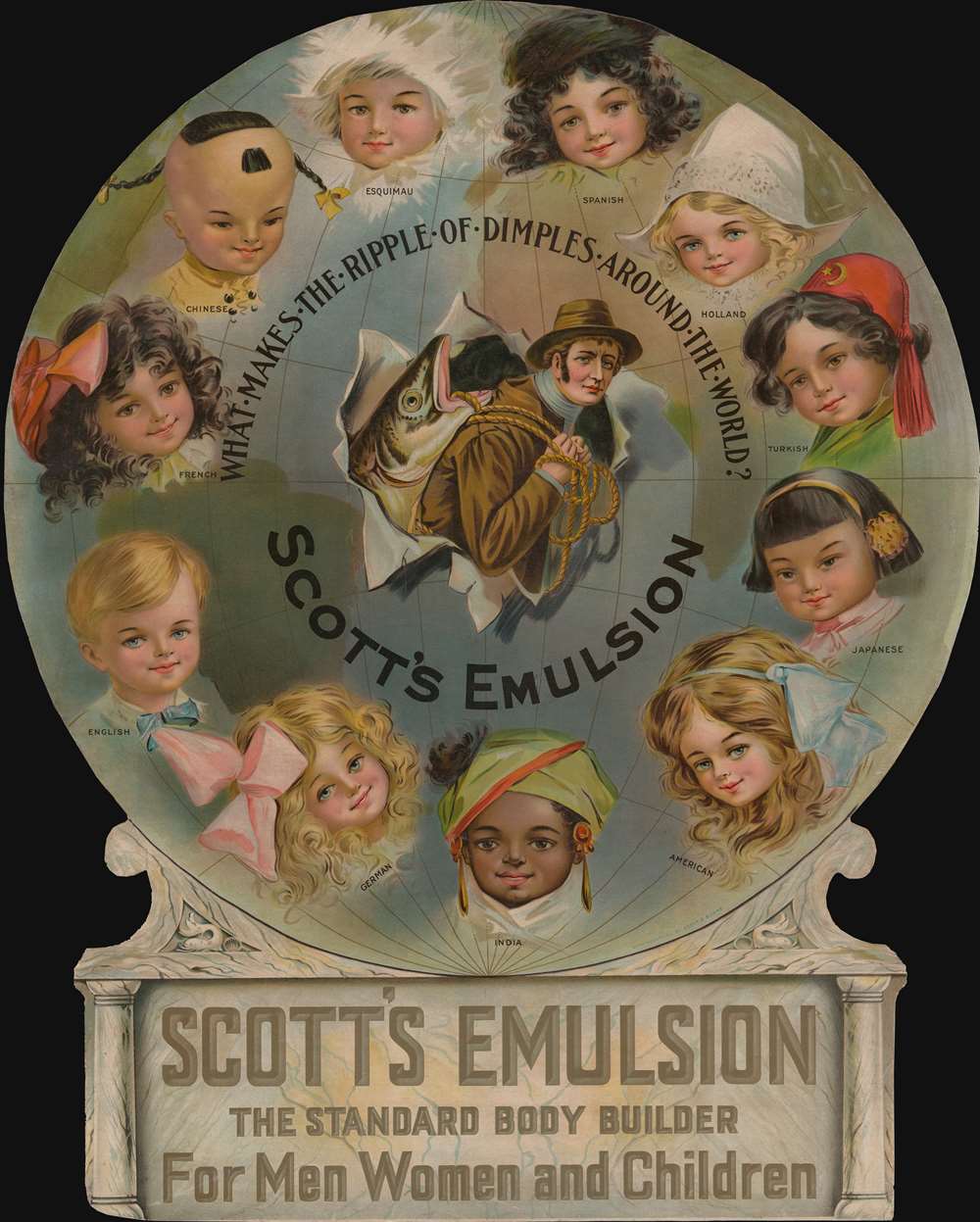1911 Scott's Emulsion Advertising Die-Cut Map of the World
ScottsEmulsion-scottbowne-1911$3,000.00

Title
What Makes the Ripple of Dimples Around the World? Scotts Emulsion. / Scott's Emulsion The Standard Body Builder for Men Women and Children.
1911 (dated) 38 x 31.25 in (96.52 x 79.375 cm)
1911 (dated) 38 x 31.25 in (96.52 x 79.375 cm)
Description
A dramatic die-cut 1911 chromolithograph advertisement for Scott's Emulsion Cod Fish Oil - one of the few medications from the Golden Age of Quackery that actually worked.
A Closer Look
The promotion includes stereotypical busts of children from different nations superimposed upon a hemisphere centered on the mid-Atlantic. Ethnicities represented, from top center, clockwise: Spanish, Holland, Turkish, Japanese, American, Indian, German, English, French, Chinese, and Esquimau, thus reflecting the product's global distribution. At center, a fisherman bursts through the globe carrying an enormous codfish - the primary ingredient of Scott's Emulsion. The whole sits on a baroque plinth.Scott's Emulsion
Scott's Emulsion is a pure codfish oil with 'hypophosphites of lime and soda'. It was promoted as early as the 1880s as a cure for consumption (tuberculosis), 'scrofulous diseases' (tuberculosis), bronchitis, and throat affections, as well as an immune booster for children. Cod liver oil does have verifiable health benefits and Scott's Emulsion proved popular - because it worked, because it was sweetened with glycerin, and because the firm lavished advertising dollars on dramatic colorful promotional materials. By the time this advertisement was issued, the English patent holders, Scott and Bowne had factories in Canada, England, Spain, Portugal, Italy, and France. It was sold across America, Europe, and Asia - hence this multi-cultural advertisement. Scott's Emulsion remains popular today.Chromolithography
Chromolithography, sometimes called oleography, is a color lithographic technique developed in the mid-19th century. The process involved using multiple lithographic stones, one for each color, to yield a rich composite effect. Oftentimes, the process would start with a black basecoat upon which subsequent colors were layered. Some chromolithographs used 30 or more separate lithographic stones to achieve the desired product. Chromolithograph color could also be effectively blended for even more dramatic results. The process became extremely popular in the late 19th and early 20th centuries, when it emerged as the dominant method of color printing. The vivid color chromolithography produced made it exceptionally effective for advertising and propaganda imagery.Publication History and Census
This die-cut advertising piece was issued by chromolithograph in 1911 by Scott and Bowne. This is the only known surviving example.Condition
Very good. Laid on linen. Some fill repair near center and along borders.




